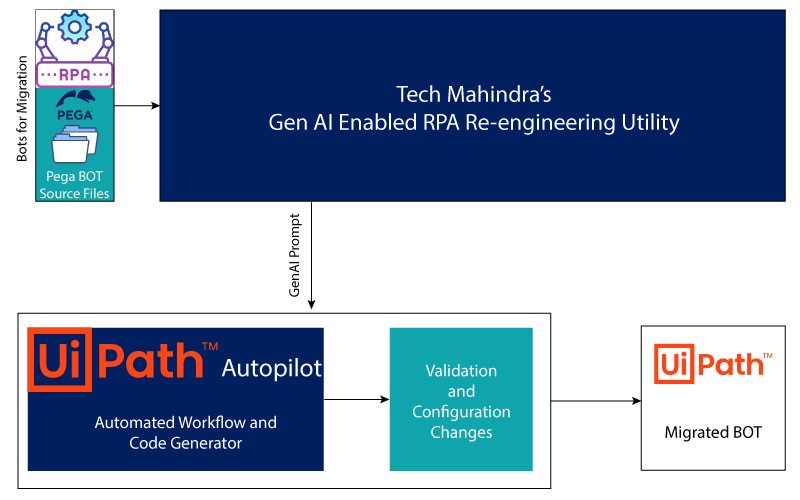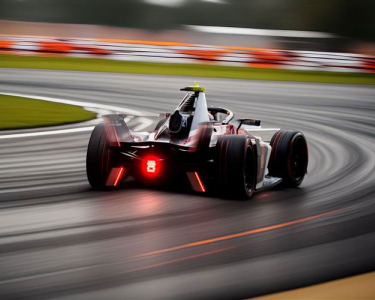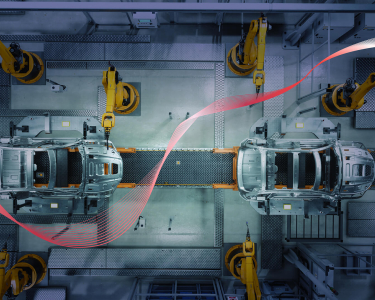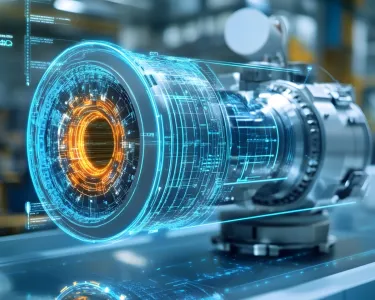Reimagining RPA Migration with GenAI: From Pega to UiPath
Robotic Process Automation (RPA) has revolutionized how businesses automate repetitive tasks. Companies rapidly adopt platforms like UiPath, Automation Anywhere, Pega, Blue Prism, and Power Automate.
While many organizations adopt a single-tool strategy, cost, scalability, or technology alignment often prompt them to migrate their RPA solutions to a new platform. However, moving from one RPA platform to another is not straightforward, as they are often manual today. This presents significant business challenges:
- High Manual Effort in Bot Migration: Because RPA platforms are not standardized, bots often need to be rebuilt manually, as automated tools cannot directly translate workflows.
- Dependencies on Expertise across Multiple RPA Platforms: Successful migration demands in-depth knowledge of the source and target RPA platforms, driving organizations to rely on specialists familiar with various tools.
- Migration Timelines as Prolonged as New Development: Due to their complexities, these projects can stretch to months, mirroring the timelines of new bot development.
- Higher Cost of Migration: The costs of overlapping licenses, increased staffing, and downtime often make migration a significant financial burden.
Organizations are looking to optimize the cost and effort of migrating RPA bots between tools. Tech Mahindra has developed an innovative solution for migrating RPA bots from Pega Robotics to UiPath to address this need.
Key Hurdles in Pega-to-UiPath Transition / Challenges in Workflow Re-engineering
The distinct architectures and technologies of Pega and UiPath create specific complexities when migrating bots. These include:
- Pega follows a different workflow design and execution model as compared to UiPath
- Activities in Pega do not always have a one-to-one equivalent in UiPath
- The interaction between bots and applications, databases, and APIs differs across platforms
- Any custom scripts or logic need to be manually rewritten or converted
- New technologies are constantly being embraced by UiPath, making it difficult to keep up with the latest standards
AI-Powered Migration with Tech Mahindra / Simplifying Migration with GenAI
Tech Mahindra’s GenAI-based Pega to UiPath migration solution simplifies the process by leveraging UiPath Autopilot. At its core is a GenAI-enabled RPA Re-engineering utility that analyzes Pega source files (specifically the .os files) to identify key components, such as process definitions, activities, actions, UI element interactions, and decision logic. This analysis is crucial to ensure that all pertinent details are captured accurately for the migration.
Once the analysis is complete, the utility generates descriptive prompts for the UiPath Autopilot. These prompts guide Autopilot in creating workflows that mirror the original Pega scripts, guaranteeing a seamless transition. This automation significantly reduces the required manual effort and improves the consistency and reliability of the migrated workflows.

Pega to UiPath Migration Process with Tech Mahindra’s GenAI solution
By automating the analysis and prompt generation, the solution delivers several key benefits:
- Reduced Manual Effort: Automating the conversion process saves time and resources
- Faster Migration: The utility accelerates the move to UiPath with minimal disruptions
- Higher Accuracy: Achieves 60-80% accuracy in initial auto-generated workflows, significantly reducing the need for minor refinements
Our Take on UiPath Migration
Migrating from Pega RPA to UiPath can be challenging, but the process becomes significantly smoother with the right automation tools. By developing a utility that reads Pega’s .os files and generates UiPath Autopilot prompts, we’ve made it possible to automatically create workflows with up to 60-80% accuracy. This solution reduces migration time and minimizes errors, making it an invaluable tool for enterprises looking to switch RPA platforms efficiently.
Next Steps
Through ongoing projects, continuous feedback, and iterative improvements, the solution's efficacy in diverse RPA scenarios will be further strengthened.
Building on its effectiveness for Pega-to-UiPath migration, future enhancements are planned to support migration across other RPA tools.
Ravindra brings over 29 years of diverse experience in the IT industry and a proven track record of delivering cutting-edge technology projects. He has been at the forefront of pioneering technologies for the past decade, driving organizational growth in intelligent automation and AI.








